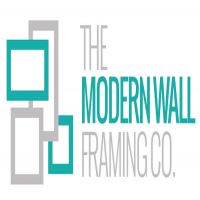Transform Your Space with Powerful Modern Wall Framing

Strong 8k brings an ultra-HD IPTV experience to your living room and your pocket.
The way we frame our walls today has a profound impact on not just the structure but also the performance and personality of a building. In a world where efficiency, sustainability, and design reign supreme, modern wall framing has become an essential innovation in construction. Whether you're remodeling a home, starting from scratch, or diving into architecture, understanding modern wall framing can give your project the strength and aesthetic edge it needs.
At the modern wall, craftsmanship meets cutting-edge design. This movement isn't just about building walls—it’s about constructing smarter, stronger, and sleeker environments. With sustainability and innovation at the core, modern framing helps homeowners and builders create structures that reflect today’s lifestyle demands.
Why Choose Modern Wall Framing Over Traditional Methods?
Framing is the skeleton of any structure. Traditionally, wood studs and simple layouts formed the basis of most homes. But with growing demands for energy efficiency and flexible layouts, traditional approaches fall short. Modern wall framing fills this gap with its precise, performance-driven structure.
Here’s why modern wall framing stands out:
Enhanced Load Distribution: It utilizes engineered materials that distribute weight more effectively.
Thermal Efficiency: Modern framing techniques integrate insulation more effectively, reducing heating and cooling costs.
Fewer Materials, More Strength: With smart spacing and advanced framing, you use less material while maintaining structural integrity.
Design Versatility: From open concept plans to large windows and curved walls, this technique supports bold design ideas.
The Core Components of Modern Wall Framing
To master modern wall framing, you need to understand its foundation. This construction method integrates multiple forward-thinking materials and practices. Here's what sets it apart:
1. Engineered Lumber and Metal Studs
Instead of traditional wood, modern framers often use LVL (Laminated Veneer Lumber) or steel studs. These materials are straighter, stronger, and resist warping, pests, and moisture damage.
2. Advanced Framing Techniques
Also known as Optimum Value Engineering (OVE), this method reduces redundant studs and maximizes insulation space—resulting in lower material costs and better energy performance.
3. Tighter Thermal Envelopes
Modern wall systems are designed to seal buildings better. Rigid foam, spray foam, and structural insulated panels (SIPs) are used to minimize thermal bridging and improve air tightness.
4. Prefabricated Wall Panels
In many cases, walls are framed offsite and delivered as ready-to-install panels. This saves time, reduces errors, and ensures a consistent quality across the build.
How Modern Wall Framing Enhances Every Build
Incorporating modern wall framing techniques can elevate any project, whether residential or commercial. Here’s how:
Faster Construction Time: Pre-cut, prefabricated panels reduce labor and weather-related delays.
Eco-Friendly Results: Engineered materials use less wood and waste less during production.
Energy Savings: Proper framing allows for better insulation placement, which significantly lowers utility bills.
Aesthetic Freedom: Create taller ceilings, wide-open layouts, and sleek modern interiors with no compromise on stability.
From structural strength to architectural flair, modern framing is redefining what's possible in home and office design.
Overcoming Challenges in Modern Wall Framing
Despite its many benefits, modern wall framing does come with a learning curve. But with the right knowledge and tools, these challenges can easily be overcome.
Higher Upfront Cost: Engineered lumber and specialized labor can raise initial costs. However, the long-term savings in energy bills and maintenance balance out the investment.
Skilled Labor Required: Modern framing requires precision, which means training your team or hiring experienced contractors.
Compatibility Issues with Older Builds: Retrofitting older homes can be tricky but is manageable with hybrid solutions that blend modern and traditional methods.
Planning ahead and working with knowledgeable builders will ensure these issues don’t slow down your project.
The Future of Construction Lies in Modern Wall Framing
The evolution of modern wall framing is far from over. As the demand for sustainable, high-performing homes increases, the techniques and tools continue to improve.
What to Expect in the Coming Years:
Smart Wall Integration: Walls embedded with smart sensors for temperature, moisture, and air quality.
Recyclable Framing Materials: The rise of bio-based composites and recyclable metals in framing.
3D Printed Structural Elements: Framing components printed on-site for custom projects.
AI-Powered Design Software: Tools that optimize framing layouts for strength and energy performance in real time.
Staying informed about these advancements ensures you stay ahead in the construction game.
Final Thoughts: Build Smarter with Modern Wall Framing
Modern wall framing is no longer just a trend—it’s the new standard. Combining efficiency, strength, and style, it empowers homeowners, architects, and builders to create high-performance spaces that align with modern living.
At the modern wall, we're committed to bringing these innovations to life, one frame at a time. Whether you're building a dream home or upgrading a single room, choosing modern wall framing means building for the future—stronger, smarter, and more beautiful than ever before.
Note: IndiBlogHub features both user-submitted and editorial content. We do not verify third-party contributions. Read our Disclaimer and Privacy Policyfor details.


